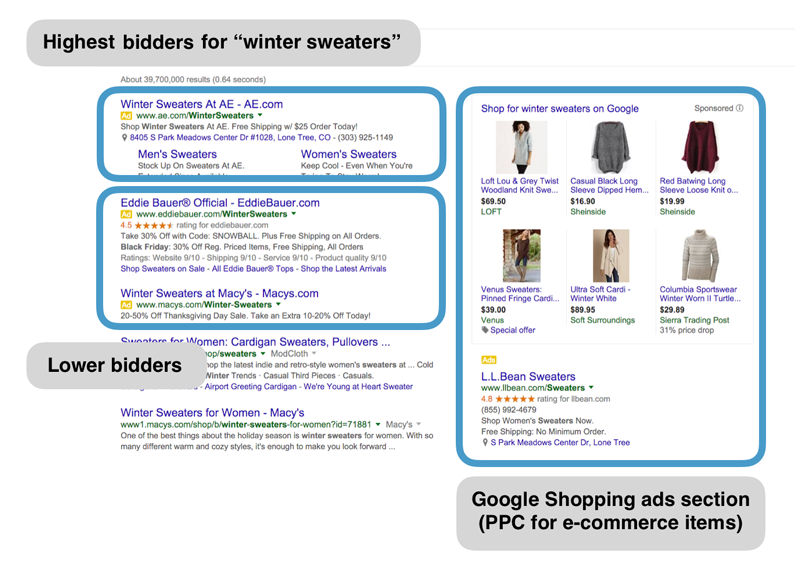It's no secret that newcomers to online advertising often become confused when launching their first Pay Per Click (PPC) campaigns. Even veteran advertisers can be stymied by the model's nuances, and fail to optimally configure campaigns.
There's a lot to learn. What seems like a straightforward model-at its simplest, companies pay for online advertisements to appear in search results, and pay for each click-through to their sites-is in fact brimming with unseen factors that can influence cost and strategy.
The stakes are especially high for companies entering new markets online. Every major international online search platform offers PPC options for advertisers.
Companies that invest in international PPC campaigns can see positive and sustained results for their localized websites, particularly when PPC is complemented with other online marketing initiatives. The result: new revenue streams from new customers in new markets.
But navigating PPC dashboards can be tricky. This overview can help you understand what to do when running international PPC campaigns, and why. Let's examine five main factors: budget, keywords, targeting, positioning, and quality score.
1. Budget
Since your company incurs cost every time a user clicks on your brand’s localized advertisement, you must set a budget that’s equal to your bid price multiplied by the number of visits you’ll receive (via clicks).
Let's take a look at how MotionPoint helps its clients create PPC campaigns. In our experience, most clients define a PPC budget to be used for a limited time, often after the launch of their new international websites. We usually see planning timeframes of three, six, or 12 months ahead of when the budget is actually spent. This can be further broken down month by month.
When a total budget is identified and approved, MotionPoint helps the client structure an international campaign, making recommendations based on our benchmark data and market research. This informs the use of specific filters and variations for these campaigns.
One of these budget-related variables is how much to spend and when. MotionPoint pinpoints specific days of the week-and even times of day-to place bids.
To ensure the proper promotion of a client's site launch, MotionPoint manages this localized PPC budget on a daily basis. We log into advertising platforms each day to confirm that our bid price is optimal, and to ensure our daily spend is averaging out to meet the monthly budget.
Managing this daily spend may sound simple, but both web traffic and bid prices fluctuate on a daily basis. It becomes increasingly important for us to stay on top of what's happening as the campaign unfolds, in order to quickly understand what's working and what isn't. In PPC, the faster you are able to correct flaws, the higher your ROI becomes.
In addition, keyword quality can ebb and flow, which also often dictates the need for daily ad management. For instance, some keywords might perform much better than others. The catch: these higher performing keywords might be the most expensive. If MotionPoint and our client determine these pricey keywords to be worthwhile, we can (and should) increase our bid for those keywords.
This tactic has an ebb and flow of its own, however—by doing this, we may need to lower our bids for other less valuable keywords, to remain in budget.
A best practice for our clients is to house a separate PPC budget for each individual country or market. This ensures the budget aligns directly with the performance of the localized website receiving the promotional efforts.
As a brand targets more and more international markets, it can continue to test the effectiveness of PPC by market, and alter the budgets to maximize profit as needed.
2. Keywords
Keywords provide the beating heart of international PPC campaigns. Keywords hold the value for both advertisers and online consumers, since they reveal the purchase intent of searchers. This is the primary influencing factor of overall bid prices.
Since keywords play such a critical role, a PPC campaign is structured around ad copy, landing pages and the audience you choose to target. (You'll learn more about targeting in the next section.) But it can be quite difficult to effectively optimize the aforementioned variables without a clear understanding of the localized keywords you will be using in the international PPC campaign.
Keywords can be classified by their quality, as defined by a quality score. We'll explore the concept of quality score a bit later in this article, but for now, it's important to know that monitoring a keyword's performance is critical to a campaign's success. Knowing a keyword's general effectiveness-measured as low, medium or high, defined how relevant your ad content is to the assumed demographic-empowers you to quickly pivot into finding what works best and which keywords are disposable.
When companies launch campaigns that target more than one international market, they must understand that strategies and quality scores will vary by market and target. In other words, you won't see the same correlations in metrics throughout all of your campaigns. We know this based on the many different user behaviors by market.
3. Targeting
When companies promote a single website for a single market in a single language, they have the luxury of configuring PPC campaigns with obvious segments intact. For instance, there's no reason to target users living beyond Russia's borders when a company aims to woo Russian speakers in Russia exclusively.
After several rounds of similar filtering, a very specific target demographic emerges. The more narrow this targeting, the more effective (and profitable) your international PPC ads will become. Correctly segmenting these targets also allows for greater agility, since it makes it easy to quickly identify when a campaign's performance drops-or when the ad spend becomes too high.
Pursuing a target also intensifies the importance of identifying an objective for your localized campaign. What action would you like this target demographic to take? What metrics will you monitor to measure business performance?
Further, measuring the effectiveness of each PPC campaign becomes increasingly different as your performance variables diversify. In the table below, you'll see that three keywords are all performing in very different ways.

Keyword A has an outstanding Click-Through Rate and Conversion Rate, but is not driving very much traffic. In contrast, Keyword C is driving a ton of traffic, but an educated advertiser would consider the quality of the ad and the traffic to be poor.
This exaggerated example reveals the emphasis MotionPoint places on ongoing international campaign maintenance. Not only must companies worry about these metrics as a whole, but things become more granular when further analysis is invested in the demographic segments (or user targets) that were configured.
4. Positioning
At its simplest, PPC advertising exists so webmasters can display their sites at top positions in search engines. This provides the website with increased short-term exposure to consumers. This strategy usually accompanies a longer-term plan to achieve the same goal-which is where search engine optimization (SEO) enters the picture.
This obviously makes ad positioning a pivotal part of PPC campaign strategy. You’ve probably noticed that several PPC ads are often displayed at the same time on a single search engine results page (SERP). What defines the positioning of those ads? What’s happening behind the scenes?
It should now come as no surprise that the more competitive a keyword is, the more PPC ads featuring that word will display. This is based around common supply and demand principles, since the total search volume of that keyword is driving up the price of all available positions on the SERP. If there are more bidders, the search engine can sell the top spots at a premium, and discount those that reside below.
So how do we, as advertisers, ensure we’re optimally positioned for the keywords we’ve chosen to pursue?
Put simply, we must bid higher than others-and continue to do so. Competitors may do the same. International PPC campaigns can quickly evolve (or devolve, depending on your perspective) into bidding wars.

Monitoring your ad's positioning requires a constant assessment of keywords. This determines how well the words are performing, and in which position they're displaying. Companies shouldn't increase their bid on a localized keyword that they're currently ranking first for-but they also may wish to stop bidding on the ones that are sending traffic that isn't contributing to the campaign's success goals (such as increased conversions).
Positions overlap most with bid price and quality score. The higher a keyword's quality score, the less a company may have to spend, since search engines prefer to serve more relevant ads over making a few extra pennies.
And with the topic turning back to quality score, let’s dive into…
5. Quality Score
All search engines treat quality score a bit differently. Google, for example, calls ad positioning “Ad Rank.” Ad Rank can be calculated by multiplying a bid price with a quality score.
So what's quality score? This is the "grade" a search engine assigns a PPC ad, based on some of the factors we've already mentioned, including the relevancy of the site and the quality of the ad copy. Other factors include click-through rate … or the attractiveness of the ad… or your advertising account's performance history. This history consists of items like the age of your advertising account and click-through rates from campaigns prior.
International search engines use other terms for quality score. China's Baidu identifies it as "Quality Degree." South Korea's Naver prefers the term "Quality Index." The names may be different, but all use similar methods to calculate the quality of a PPC ad.
Let's examine another table (seen below) to illustrate how quality score can impact price and bidding. Assume that Keyword D has a quality score of 5 (scores are given out 1-10). Let's further assume that your company places a bid of $10 for this keyword. With a quality score of 5, the ad is placed in position 1.

Now, let's imagine that the quality score for Keyword E is 10. You want this ad to display in position 1 for this keyword, too. How much will the company bid? Having a quality score of 10 can place the ad in position 1, so a $5 bid-half the cost of previous bid (with a score of 5)-should do it.
The same effect is shown for Keyword F, except in reverse. The quality score slipped to 2.5. This forces a company to bid double the cost of Keyword D in order to fill the coveted top spot in the SERP.
It's important to note that not only does quality score influence position, but position also influences quality score. This occurs simply because a higher ad position usually leads to a stronger Click-Through Rate, which is a key factor in determining an ad's quality score over time.
The Takeaway
This overview on PPC campaigns clearly illustrates the importance of having a dedicated resource of smart marketers, fluent in the local language and customs of international markets, overseeing the creation and management of an international PPC campaign.
PPC advertising is often tricky business, requiring comprehensive knowledge and nuanced strategy. Be sure to keep these five factors in mind as you design your company's international PPC campaigns, and be diligent in maintaining the best possible balance between them as the campaign unfolds.
MotionPoint has assisted dozens of clients with international PPC campaigns that have extended throughout hundreds of target markets. Whether your company is looking for some guidance on PPC best practices or a full-time resource, MotionPoint can help optimally position your brand across the web.
Last updated on December 02, 2015